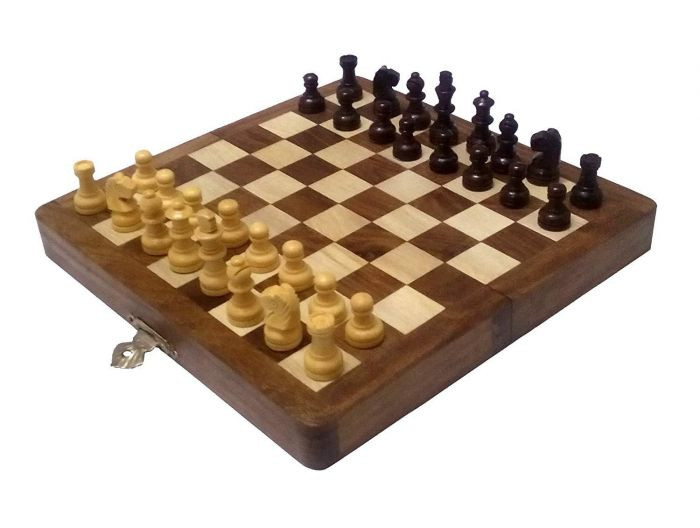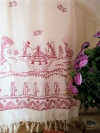Board games were very common indoor games in the royal courts of ancient kingdoms. Most board games were developed to train and educate young princes about warfare and kingship. Some important traditional board games are
- Chaturanga - It is believed to be the earliest Indian board game that has been developed into modern Chess. Played on a square chequered board, this game consists of miniatures of the king, queen, army, elephant horse, etc which move across the board by following some rules. The purpose of this game was to teach the young princes about the four Anga or wings of the military i.e the infantry, the elephants, the chariots, and the cavalry, and teach them the strategies of warfare.
- Pachisi - It is an important ancient board game which is also known as Choupad and Pasha, whose reference is found in Mahabharata. It is a 2-4 player game played on a chequered board shaped like a symmetrical cross with scoring pieces or shells and dice. A player's piece moves up and down the board according to the throw of the dice. The word Pachisi had been derived from the word Pachis meaning twenty-five as 25 is the highest score a player can get by throwing the dice. Mughal emperor Akbar was one of the patrons of this game and modern Ludo is believed to have evolved from Pachisi.
- Pallankuzhi - A traditional two-player board game of South India, Pallankuzhi is played on a rectangular board that has two rows and seven columns with fourteen holes in each row. The holes are filled with shells, small stones, etc, and the player who can capture maximum shells is the winner.
- Backgammon - It is one of the oldest board games whose reference is present in the Ellora cave paintings. It is a two-player checker game where each player aims to bear off all the fifteen checkers of the board based on the rolls of two dice.
- Navakankari - This game has its roots in the Roman Empire and is also known as Nine Men's Morris. It is a two-player game where pieces are arranged horizontally or vertically and a player has to reduce the opponent's pieces.
- Ali Guli Mane - It is a South Indian board game and it is known as Chenne Mane in coastal Karnataka and Akal Patta in North Karnataka. In this game, the players have to maintain the closest row of holes and fill as many rows as possible.
- Chowka Bara - It is a two or four-player chance-based board game from Kerala which is played by rolling the dice.
- Solitaire - This is a brainstorming game and also known as Brainvita. It is a single-player game where he has to move pegs or marbles across the board consisting of several holes in such a way as to vacate the entire board and leave only a solitary peg or marble in the central hole.
Current Scenario
At present, Indian traditional games and toys fight for survival. With the development of technology and lifestyle, such indigenous sports are losing ground, and computer and video games are taking their place. Traditional toys are getting replaced by the latest plastic-made remote control toys.
To retrieve India's tradition, people must be made aware of the existing Indian toy-making industry. The Government of India has already started a National Action Plan to make India a global toy hub by increasing international footprints, achieving organic synergies, and providing availability of raw materials and artisan skillset. India's first-ever Virtual Toy Fair was conducted in February 2021. This initiative is a major step in attracting various online platforms like ArtsofIndia to promote and sell Indian games and toys within the country as well as abroad. Indian toys are eco-friendly, do not consume electricity, are cheap, and are educational which not only provide pleasure but also help in the all-around development of a child. So, it is high time to support Indian traditional games and toys and contribute in boosting the Indian toy-making industry.
Picture Source:ArtsofIndia.in



